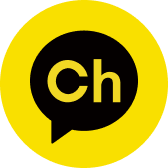When you start a new hiring process, the first thing you should do is schedule a kickoff meeting. It sets the direction of the search and ensures that the recruiter and the hiring manager are aligned—working with the same goals, language, and expectations.
But when the time comes to actually hold the meeting, it’s easy to get stuck thinking:
“How detailed do we need to go?” or “Can’t we just figure this out later?”
Data tells a different story.
According to research from Gem and CareerBuilder, teams that conduct structured kickoff meetings:
•
reduce their time-to-hire by up to 3x
•
are twice as likely to secure qualified candidates
•
and cut JD revisions by 50%.
Just 30 minutes of prep can change the direction, speed, and success of your entire hiring process.
In this post, we’ve outlined the essential elements of an effective hiring kickoff meeting—organized by priority and execution flow.
If you’re a recruiter or hiring manager, this is the checklist you’ll want to keep close.
Start with Role Overview and Hiring Context
Why are we hiring for this role?
At this stage, your goal is to surface the team’s actual expectations and organizational needs.
Category | Description |
Reason for hiring | Backfill due to resignation, new team setup, performance gap, or a new project initiative |
Goal of the role | Ex: Lead backend system refactoring, own new marketing automation tool |
Reporting line | Ex: CPO → Tech Lead → Backend Engineer / PO → Marketer |
Scope of work | Core tasks (data pipeline dev, user interviews), secondary tasks (reporting, vendor comms) |
Key collaborators | PO, marketing team, support team, external agencies |
Define the Ideal Candidate Profile
Who exactly are we looking for?
This step forms the basis of the job description (JD) and the evaluation criteria—and shapes how you communicate with candidates.
Category | Description |
Must-Have Requirements | ① Tech skills: Practical experience with at least 2 of React, TypeScript, PostgreSQL
② Language proficiency: Business-level English for communication (docs & meetings)
③ Experience: 5+ years total, 2+ years in a relevant domain
④ Domain knowledge: Familiarity with SaaS or personal data platforms |
Nice-to-Haves | ① AWS infrastructure experience (EC2, RDS, S3)
② Team collaboration in agile environments
③ Early-stage startup experience (0→1 product build)
④ Open-source contributions or technical blog activity |
Soft Skills | ① Proactive approach to problem definition & solving
② Strong cross-functional collaboration
③ Willingness to share knowledge and communicate clearly
④ Accountability and follow-through |
Preferred backgrounds | Ex: Mid-sized product-focused teams (10–50 employees), fast-moving service environments |
Less preferred | Ex: Mid-sized product-focused teams (10–50 employees), fast-moving service environments |
Clarify Selling Points and Persuasion Strategy
Why should this candidate say yes to us?
This is where you start laying the groundwork for candidate persuasion.
Category | Description |
EVP (Employer Value Proposition) | ① Flexible remote/hybrid work (e.g., 2 days in-office)
② Early ownership of team building
③ Clear, performance-based reward system
④ Budget for external learning & conferences |
What makes this role unique | Full-cycle ownership from architecture to operations, decision-making speed |
Culture & leadership style | Full-cycle ownership from architecture to operations, decision-making speed |
Growth path | Full-cycle ownership from architecture to operations, decision-making speed |
Assess Market Difficulty and Search Strategy
How hard will this role be to fill?
This helps align expectations on hiring timeline and recruiting effort.
Category | Description |
Talent market conditions | Ex: 3–5 year frontend engineers are scarce and highly competitive in salary |
Benchmark data | Avg. hiring time for similar roles: 9 weeks. Avg. resume inflow: 4/week. Interview conversion: 15% |
Sample resumes | Share 2–3 example profiles using TalentSeeker or internal DB to calibrate expectations |
Finalize Hiring Process and Timeline
What’s the game plan?
The more clarity you establish now, the faster everything will move later.
Category | Description |
Process flow | Ex: Resume review → 1st interview (team) → 2nd interview (exec) → Reference check → Offer |
Interviewers | 1st: Tech lead / 2nd: PO & CEO / Assignment review: Senior engineer |
Evaluation criteria | ① Communication
② Problem-solving
③ Skill fit
④ Culture fit – ideally use shared feedback forms |
Target start & compensation | Ideal start in 6 weeks / Salary: $1M–$1.5M / Stock options negotiable |
Final Checks
Category | Description |
JD ownership & deadline | Ex: Hiring manager drafts → Recruiter finalizes within 3 business days |
Communication strategy | Recruiter handles outreach; HM joins in final stage to persuade directly |
First resume review | Share top 3 candidates within 1 week; review resumes every Tuesday thereafter |
Want to run better kickoff meetings?
Use this guide to structure your hiring kickoff, and keep your team aligned from day one.
Then, use our ready-made template to apply it directly to any new role.
What Happens After the Kickoff?
In a fast-paced environment, the most important thing is not to skip the kickoff meeting.
But the truth is, it’s often the first thing that gets dropped under pressure.
Here’s what happens next once kickoff is done:
•
JD refinement and candidate sourcing
•
Filtering by priority criteria
•
Keyword tuning based on market realities
•
Crafting and sending the first message to candidates
Now, imagine all of that being handled for you.
That’s exactly what TalentSeeker’s TalentGPT is built for.
With just one upload of your kickoff notes, TalentGPT will:
•
Analyze the JD
•
Recommend top-fit candidates
•
Write personalized first messages for outreach
You focus on hiring strategy.
Let TalentSeeker automate the rest.




